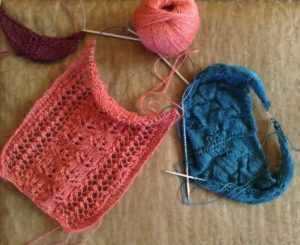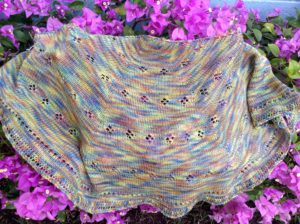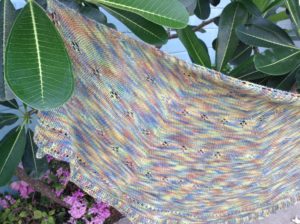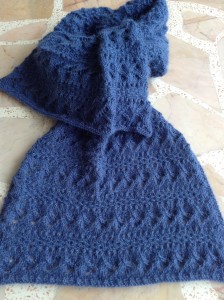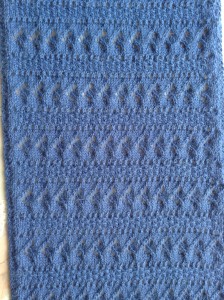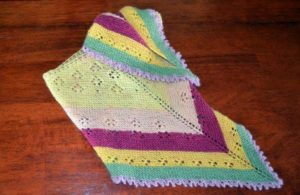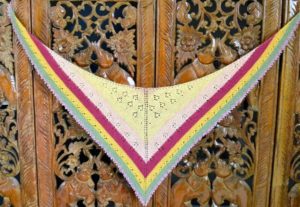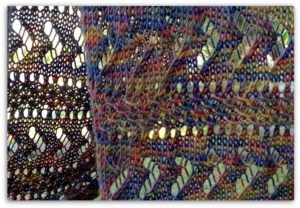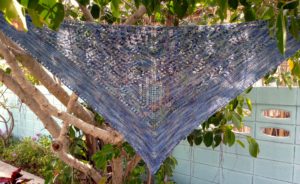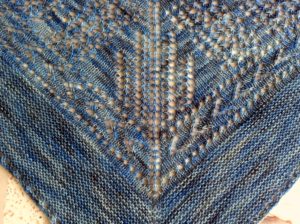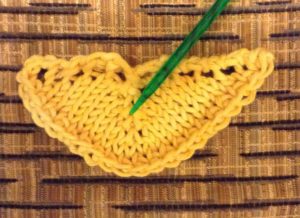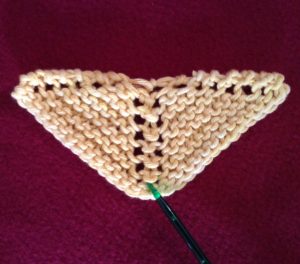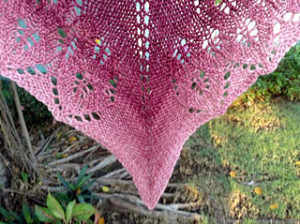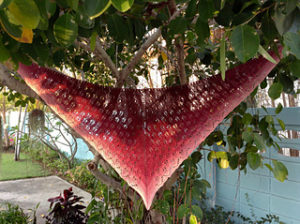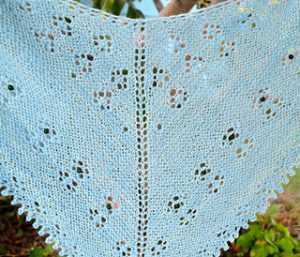I posted this FREE pattern a while ago and a friend asked me if I could make a wider scarf in a solid color – so I thought I’d share the changes in the pattern here.
What you’ll need:
3mm (US 2.5) needles
3 50-gram skeins of Alpaca Warehouse (color: petroleum) Superfine Alpaca Wool Sport 5-ply) – 200 yards/183 meters per skein
CO 83 stitches
Knit 2 rows of garter stitch
Knit the following 24 rows 21 times.
Row 1: K2, YO, K2tog, (K2tog, YO) 37 times; K1, SSK, YO, K2
Row 2: K2, YO, K2tog, P75, SSK, YO, K2
Row 3: K2, YO, K2tog, K75, SSK, YO, K2
Row 4: K2, YO, K2tog, P75, SSK, YO, K2
Row 5: K2, YO, K2tog, K1, (K3, K2tog, YO, K1) 12 times; K2, SSK, YO, K2
Row 6: K2, YO, K2tog, P2, (P2, YO, P2tog, P2) 12 times; P1, SSK, YO, K2
Row 7: K2, YO, K2tog, K1, (K1, K2tog, YO, K3) 12 times; K2, SSK, YO, K2
Row 8: K2, YO, K2tog, P2, (P4, YO, P2tog) 12 times; P1, SSK, YO, K2
Row 9: K2, YO, K2tog, K1, (K2, YO, SSK, K2) 12 times; K2, SSK, YO, K2
Row 10: K2, YO, K2tog, P2, (P1, P2togTBL, YO, P3) 12 times; P1, SSK, YO, K2
Row 11: K2, YO, K2tog, K1, (K4, YO, SSK) 12 times; K2, SSK, YO, K2
Row 12: K2, YO, K2tog, P75, SSK, YO, K2
Row 13: K2, YO, K2tog, K75, SSK, YO, K2
Row 14: K2, YO, K2tog, P75, SSK, YO, K2
Row 15: K2, YO, K2tog, (K2tog, YO) 37 times; K1, SSK, YO, K2
Row 16: K2, YO, K2tog, P75, SSK, YO, K2
Row 17: K2, YO, K2tog, K2, (S1WYIB, insert needle under running thread between the stitch just slipped and the next stitch and knit this thread, S1WYIB, K1, then pass first slipped stitch over 3 stitches, K1) 18 times; K1, SSK, YO, K2
Row 18: K2, YO, K2tog, P75, SSK, YO, K2
Row 19: K2, YO, K2tog, K4, (S1WYIB, insert needle under running thread between the stitch just slipped and the next stitch and knit this thread, S1WYIB, K1, then pass first slipped stitch over 3 stitches, K1) 17 times; K3, SSK, YO, K2
Row 20: K2, YO, K2tog, P75, SSK, YO, K2
Row 21: K2, YO, K2tog, K2, (S1WYIB, insert needle under running thread between the stitch just slipped and the next stitch and knit this thread, S1WYIB, K1, then pass first slipped stitch over 3 stitches, K1) 18 times; K1, SSK, YO, K2
Row 22: K2, YO, K2tog, P75, SSK, YO, K2
Row 23: K2, YO, K2tog, K4, (S1WYIB, insert needle under running thread between the stitch just slipped and the next stitch and knit this thread, S1WYIB, K1, then pass first slipped stitch over 3 stitches, K1) 17 times; K3, SSK, YO, K2
Row 24: K2, YO, K2tog, P75, SSK, YO, K2
Repeat Rows 1-16 once
Knit 2 rows of garter stitch
BO loosely and wet block to open the lace pattern and flatten out the sides and edges.
Let me know if you have any questions or comments.

